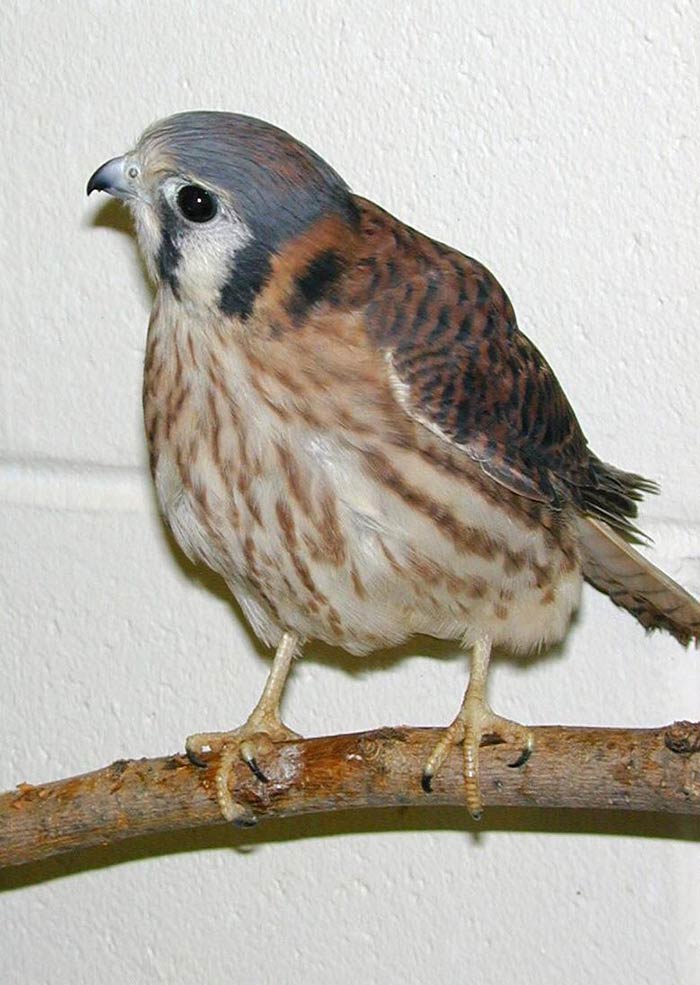American Kestrel
Falco sparverius
Description
The American Kestrel is the most colorful North American falcon. The male kestrel has a rust-colored back with black bars, a rust-colored tail, and bluish-gray wings. Females have brown bodies with black bars on their backs and tails.
Size
American kestrels are the smallest falcons on this continent, measuring 9-12 inches long (with a 20-25 inch wingspan) and weighing 3-5 ounces. Female kestrels are slightly larger than the males.
Adaptations
- As birds of prey, kestrels are well equipped for hunting with their sharp talons and hooked beaks.
- Kestrels have keen eyesight that enables them to locate their prey easily.
- The long, narrow wings of kestrels enable them to fly quickly.
Diet
In the wild, American kestrels eat insects, small mammals such as voles and mice, small birds, frogs, lizards, and snakes. At Cosley Zoo, the kestrels are fed meat such as mice, chicken, and quail.
Reproduction
The American kestrel is a cavity nester and nests in holes in trees, artificial nest boxes, or small spaces in buildings. Both males and females incubate the eggs, which hatch about 30 days after being laid. The normal clutch size is 3 to 5 young. The young grow very quickly, assuming adult weight in about 2½ weeks, and can fly about a month after hatching.
Shelter and Space Needs
American kestrels are found in various environments, including parks, suburbs, open fields, forest edges, alpine zones, and deserts. In addition to requiring open space for hunting, kestrels need perches to hunt from, cavities for nesting, and a sufficient food supply. They can be found in both urban and rural areas, hunting along roadsides from telephone wires or trees or hovering over fields.
Life Expectancy
The American kestrel lives an average of 2-5 years in the wild but can live up to 15 years in captivity.
Relationship With Man
Kestrels are an important part of the food chain, helping to keep populations of prey animals under control. They also eat animals such as mice that humans consider to be pests.
Fun Facts
- The American kestrel is one of the only birds that can hover for a long period of time by rapidly beating its wings and fanning out its tail feathers to provide lift.
- The U.S. Air Force studied falcons such as the kestrel to help them design fighter jets that maneuver quickly in the air.
- Kestrels have two markings on the back of the neck that look like eyespots to deter potential predators.
- In the winter, male and female kestrels occupy different habitats to decrease competition for food. Females inhabit open areas while males prefer more dense vegetation.







